- Details
- Hits: 2572
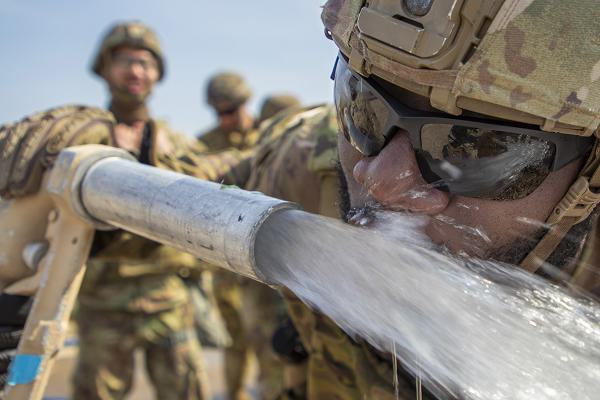
Paju-si, South Korea. (March 15, 2025): Water, water, everywhere but not a drop to drink. Troops in the field can go without a lot of things, sleep, food, and rest, but the one thing they can’t do without is water. In this photo by Staff Sergeant Neil McLean, Staff Sergeant Rickel May tastes fresh water after completing water purification operations to ensure a safe and adequate supply for the troops.
SSG May and his team are fighting one of the deadliest enemies on the battlefield… thirst. Experts tell us that a warfighter in good physical condition can last up to three days without water. That is not a long time. This is why the military deploys teams of Water Treatment Specialists who are experts in filtration, disinfection, and reverse osmosis to produce safe drinking water regardless of the operational environment.
- Details
- Hits: 2939
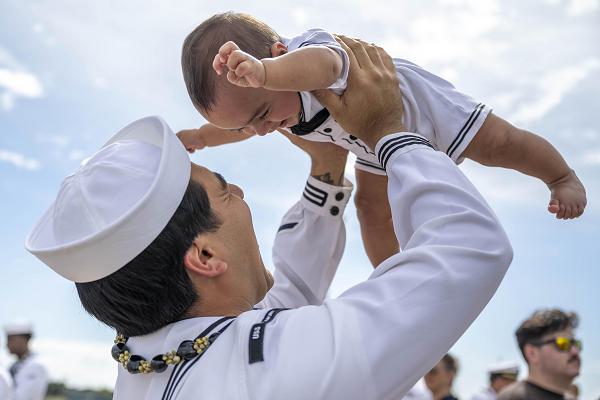
“It is not the ship so much as the skillful sailing that assures the prosperous voyage.”
~George William Curtis.
Joint Base Pearl Harbor-Hickam, Hawaii. (March 26, 2025): Thanks to the skillful performance of its crew, the U.S.S. Vermont has returned from its maiden voyage to the Western Pacific. In this photo by Petty Officer 1st Class Scott Barnes, Petty Officer 2nd Class Chris Gailiatabarez plays with his child upon his return following a seven-month deployment.
The Vermont is a member of the Virginia class, the newest version of nuclear-powered cruise missile fast attack submarines in service. The ship is replacing the aging Los Angeles class subs and will be fully acquired by 2043. By incorporating “open architecture,” or the ability to easily update with modular sections, the Vermont is expected to remain in service until at least 2060. The newest ships will primarily be used for anti-submarine warfare and to gather intelligence.
- Details
- Hits: 4445
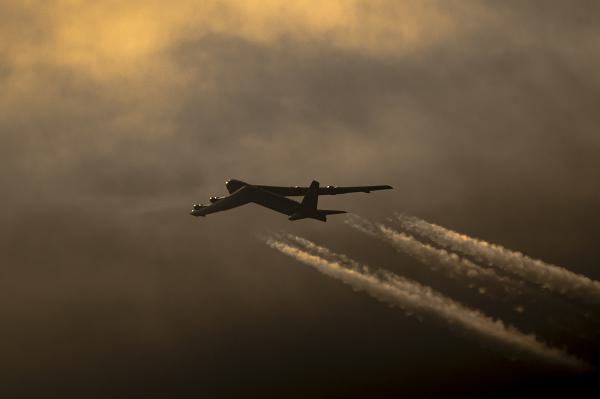
RAF Fairford, United Kingdom. (March 20, 2025): An aircraft already older than most of its pilots is getting yet another lease on life. In this photo by Master Sergeant Chris Hibben, a B-52H Stratofortress assigned to the 69th Expeditionary Bomb Squadron flies over Europe during a recent NATO exercise. The veritable Stratofortress is undergoing a major upgrade with the replacement of its aging and out-of-production Pratt & Whitney TF33 engines with Rolls-Royce F130 engines, an upgrade that will allow it to fly well into the 2050’s.
In 2021, the Air Force selected Rolls Royce to deliver over six hundred new engines for America’s fleet of 76 Boeing B-52H strategic bombers. The engines come from the Rolls-Royce's BR700 family, a line that has a stellar reputation after accumulating over thirty million flight hours. The company is conducting performance trials at its NASA Stennis Space Center site in southwest Mississippi and the engines will be built at the Rolls Royce manufacturing facility at Indianapolis, Indiana.
- Details
- Hits: 3364
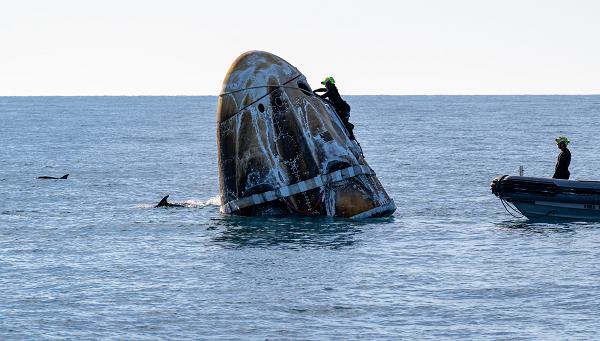
Tallahassee, Florida. (March 18, 2025): In this photo by NASA’s Keegan Barber, a pod of dolphins greets the SpaceX Dragon capsule after its successful splashdown off the coast of Florida. The flight marked a significant moment in history as Colonel Nick Hague became the first active-duty Space Force Guardian in space. During his 171 days aloft, Col. Hague logged 72,553,920 miles and completed 2,736 orbits of the Earth.
The U.S. Space Force, established in 2019, is the sixth branch of the US military with a mission to secure America’s interests in space. The agency is responsible for launching and operating satellites, developing and deploying space-based capabilities, and conducting research on space technologies. Guardians also monitor satellites, track space debris, and guard against a surprise missile attack on the U.S. They are also charged with protecting vital communications, navigation, and intelligence gathering operations in space from hostile interference.
- Details
- Hits: 3988
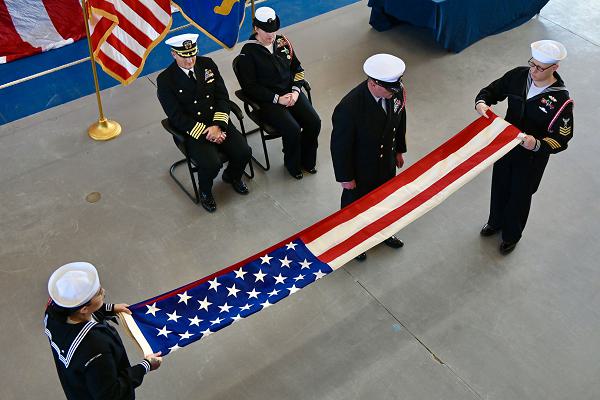
Naval Station Great Lakes, Illinois. (March 20, 2025): It is a symbolic gesture that conveys a nation’s gratitude for true and faithful service. In this photo by the Navy’s Kelsey Danner, Sailors fold the American flag during a retirement ceremony held here. The flag is folded thirteen times to represent the original colonies of the United States, but that is not the only tie to the Revolutionary War.
First, the flag is folded into a triangle to symbolize the tri-cornered hats worn by soldiers who fought for independence. In addition to representing the original colonies, each fold has its own symbolism. The first fold represents life, for example, while the second expresses a belief in a supreme being, and the third honors veterans who gave their lives. Each subsequent fold represents a tribute to fathers, women, god, and the United States.
- Details
- Hits: 3948

Colorado Springs, Colorado. (March 19, 2025): In this photo by Dylan Smith, the Air Force’s Christina Watrall scores a point against an opponent during a Fencing championship at the Air Force Academy. Like pirates of old, the military continues to incorporate the ancient art of Fencing into its training and competitions. With all the high-tech arms available today, what value is sword play in modern warfare?
Archeologists tell us the first evidence of sword fighting was discovered on a temple wall in Egypt, circa 1190 BC. These early drawings depicted warriors in combat as well as individuals apparently participating in a duel. In ancient Greece, swordsmanship became a staple of the Olympic Games and the Greeks established the first Fencing school teaching combat styles that are still used today.


